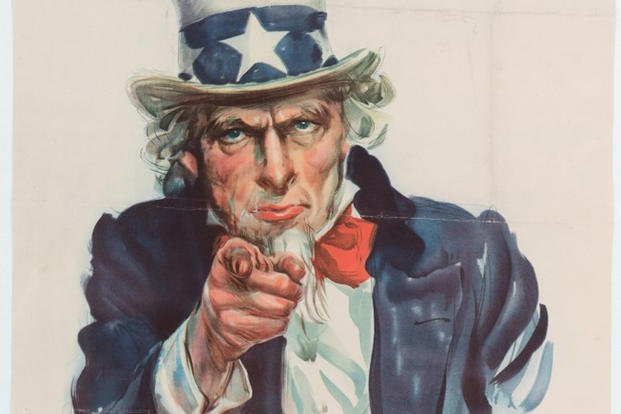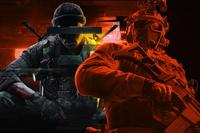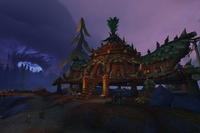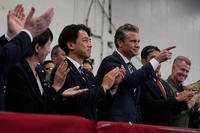A proliferation of colorful and striking posters emerged as, in effect, the social media memes of the World War II era.
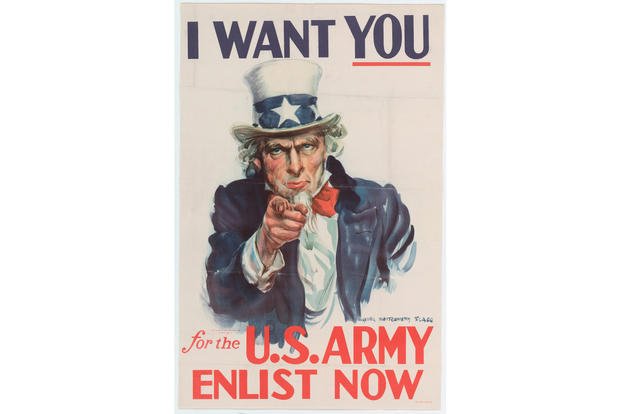
Perhaps the most iconic was the Uncle Sam poster, created by James Montgomery Flagg and captioned: "I Want You for the U.S. Army." Flagg actually created the poster during World War I, and due to its enduring popularity, it was used again during World War II with some minor modifications.
The British, however, originated the Uncle Sam concept in 1914, with their own finger-pointing war hero — Lord Kitchener — depicted. Its caption was "Your Country Needs You," an idea Flagg borrowed to create the Uncle Sam version.
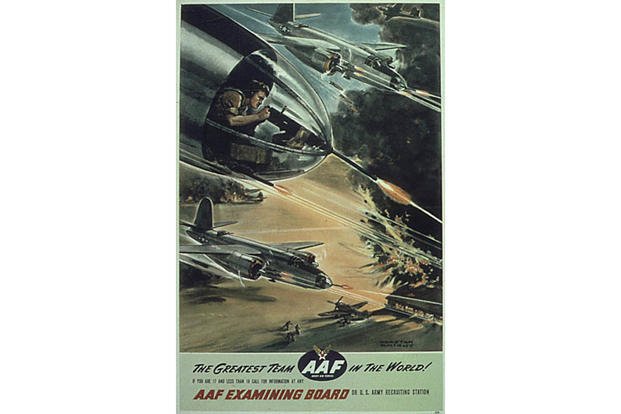
However, posters and other incentives were not quite enough to entice a sufficient number of enlistees, so in World War II, as in World War I, Congress found it necessary to draft men into service.
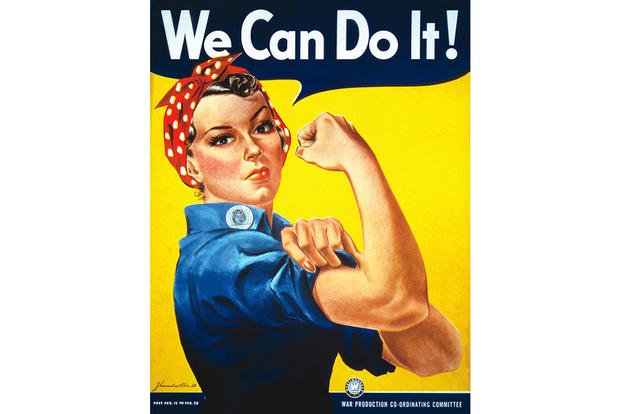
Wartime posters were not just about military recruiting. Attracting women to military-industrial factories to produce planes, tanks and munitions was epitomized by artist J. Howard Miller's "We Can Do It" poster, which featured a woman in a red and white polka-dot headscarf and blue shirt flexing her biceps.
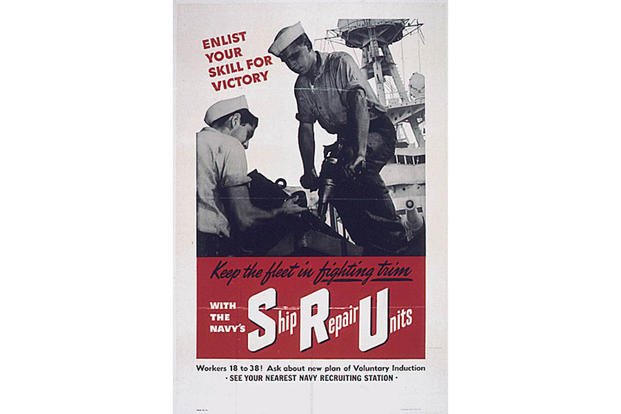
Other wartime posters were aimed at those on the home front, emphasizing the importance of buying war bonds; rationing gas, fuel and clothing; and urging Americans to make do with less so troops would have enough.
Some posters emphasized security, the most iconic being the poster by artist Seymour R. Goff depicting a sinking ship and captioned: "Loose Lips Might Sink Ships."
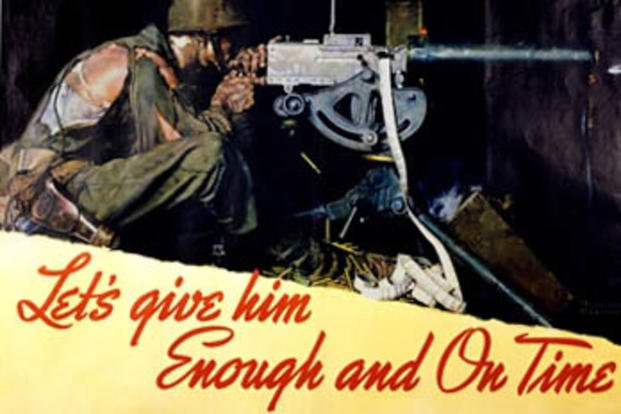
Perhaps the most famous artist to produce a poster was Norman Rockwell, who illustrated a soldier manning a gun, captioned: "Let’s Give Him Enough and On Time." The message was aimed at Americans on the home front who were encouraged to give to the war effort and to scale back consumption so that factories could prioritize arms production.
Although Rockwell painted some posters, he was much better known for illustrating Saturday Evening Post magazine covers in support of the war effort.
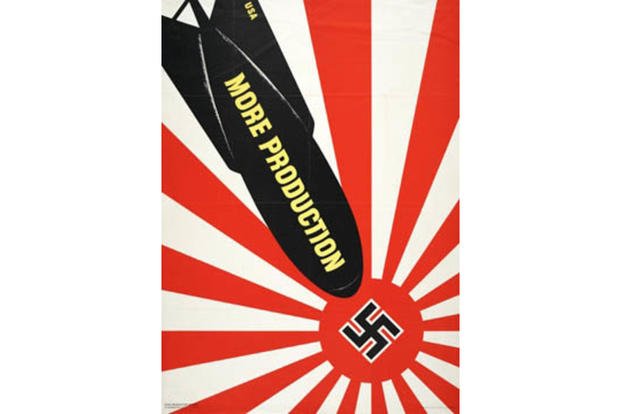
Many posters depicted the enemy as menacing. One striking poster illustrates a missile with USA stamped on the fin and "MORE PRODUCTION" written on the body. Its target was a swastika set in the red circle of Japan's Rising Sun flag. It was produced by an artist in the War Production Board.
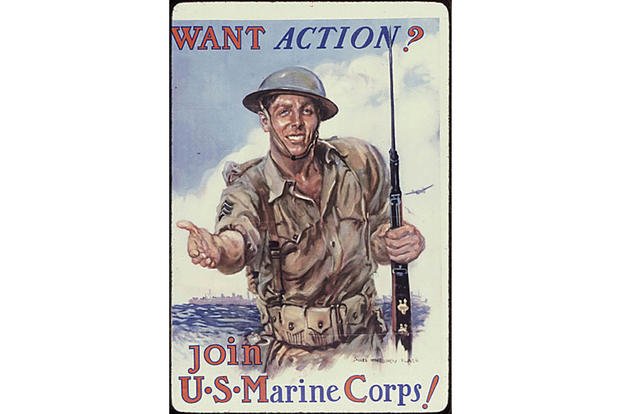
After World War II, posters continued to be used by the military, two iconic ones being the Marine Corps' "We Don't Promise You a Rose Garden: The Marines are Looking for a Few Good Men," published in 1971; and the Army's "Be All You Can Be," illustrated in a great variety of posters that came out at various times during and after the Vietnam War.
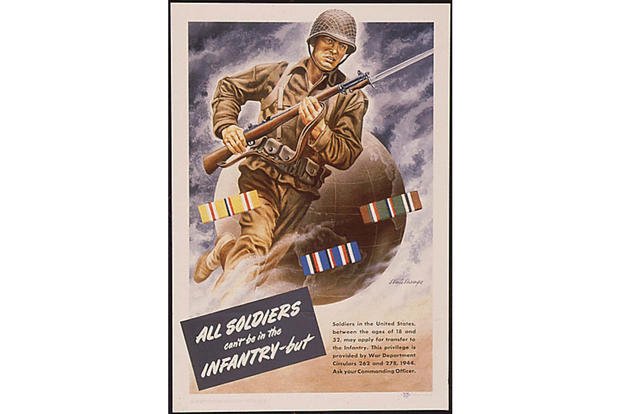
Keep Up With the Best in Military Entertainment
Whether you're looking for news and entertainment, thinking of joining the military or keeping up with military life and benefits, Military.com has you covered. Sign up for a free Military.com membership to have military news, updates and resources delivered directly to your inbox.
